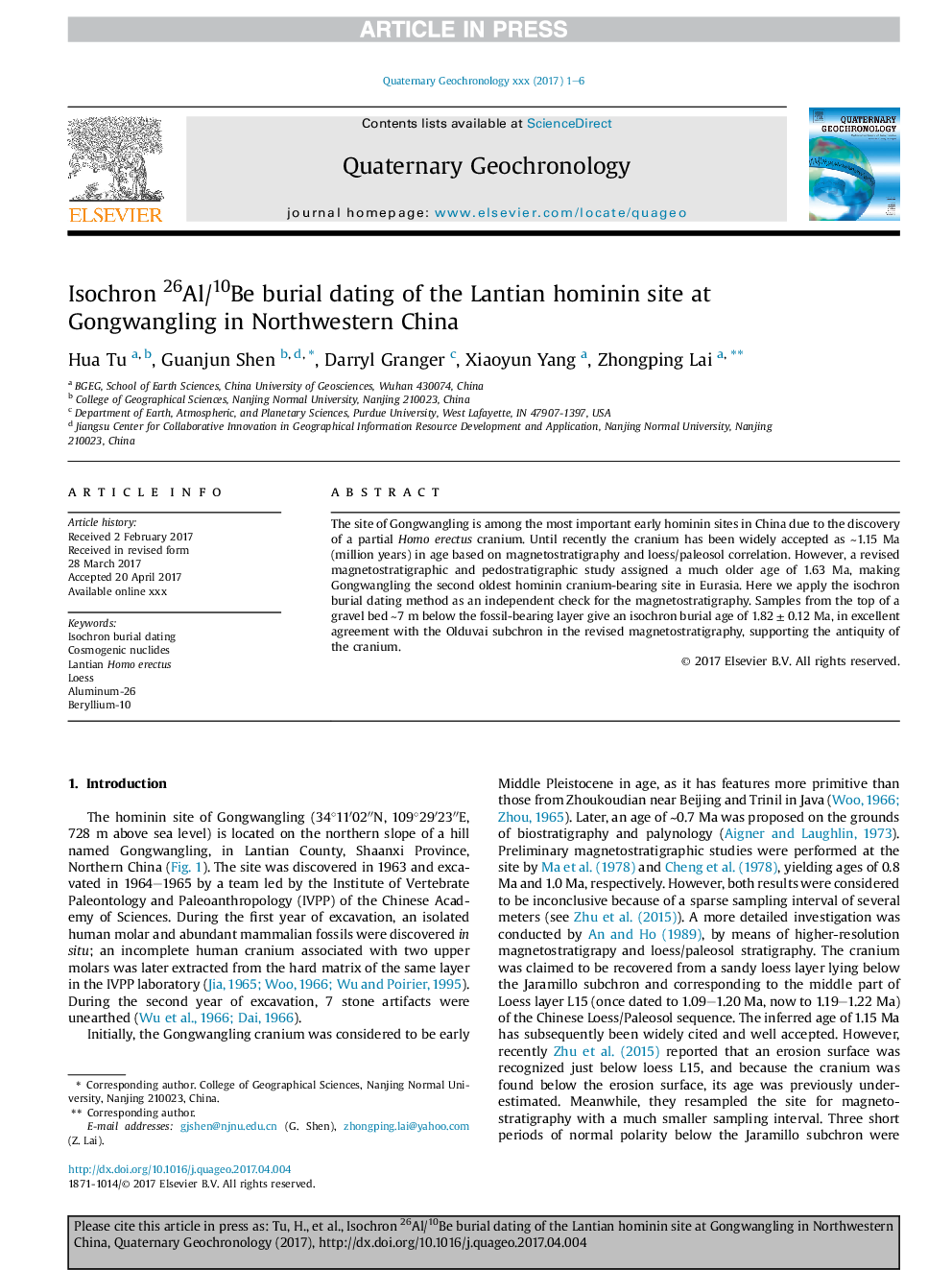| Article ID | Journal | Published Year | Pages | File Type |
|---|---|---|---|---|
| 5784965 | Quaternary Geochronology | 2017 | 6 Pages |
Abstract
The site of Gongwangling is among the most important early hominin sites in China due to the discovery of a partial Homo erectus cranium. Until recently the cranium has been widely accepted as â¼1.15 Ma (million years) in age based on magnetostratigraphy and loess/paleosol correlation. However, a revised magnetostratigraphic and pedostratigraphic study assigned a much older age of 1.63 Ma, making Gongwangling the second oldest hominin cranium-bearing site in Eurasia. Here we apply the isochron burial dating method as an independent check for the magnetostratigraphy. Samples from the top of a gravel bed â¼7 m below the fossil-bearing layer give an isochron burial age of 1.82 ± 0.12 Ma, in excellent agreement with the Olduvai subchron in the revised magnetostratigraphy, supporting the antiquity of the cranium.
Related Topics
Physical Sciences and Engineering
Earth and Planetary Sciences
Geochemistry and Petrology
Authors
Hua Tu, Guanjun Shen, Darryl Granger, Xiaoyun Yang, Zhongping Lai,
